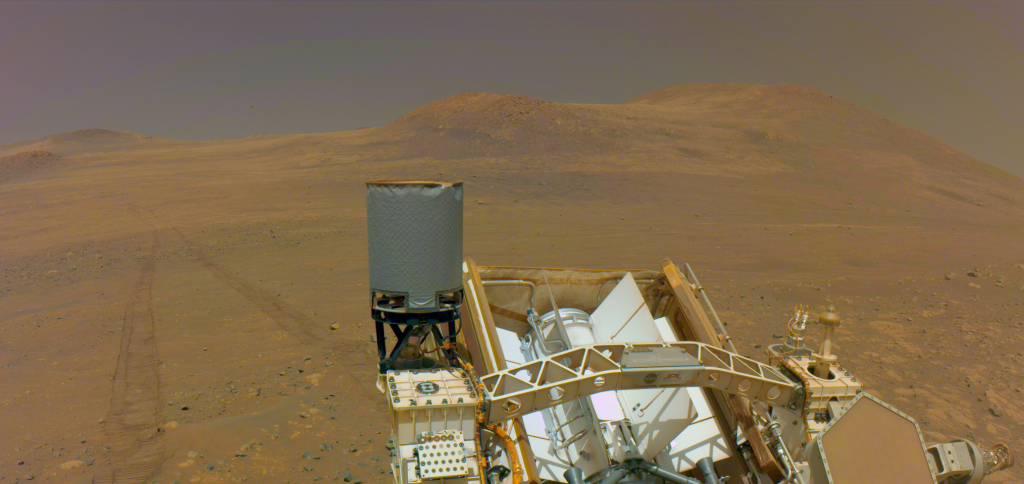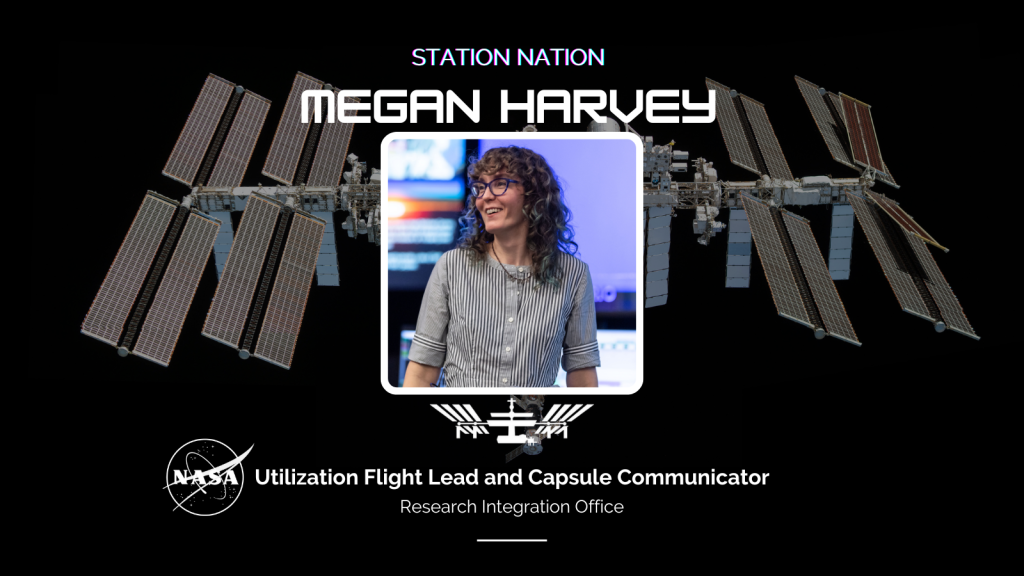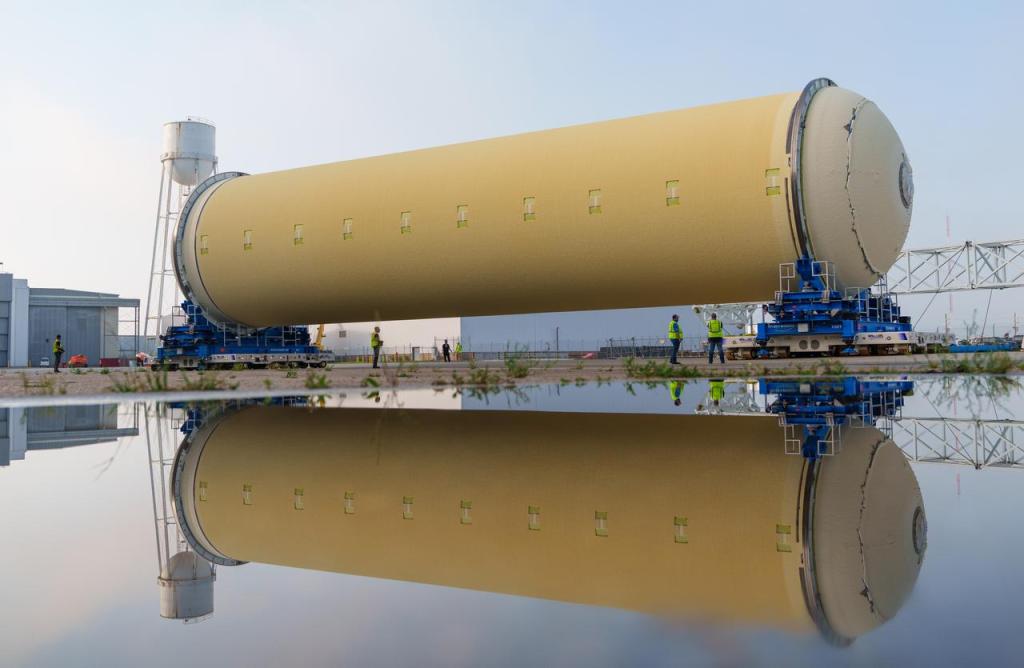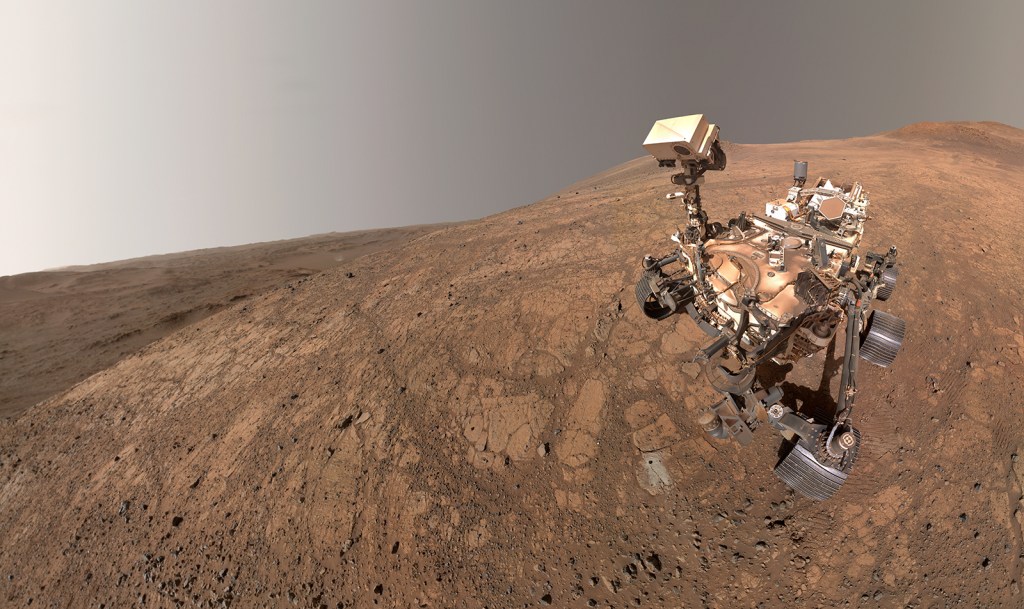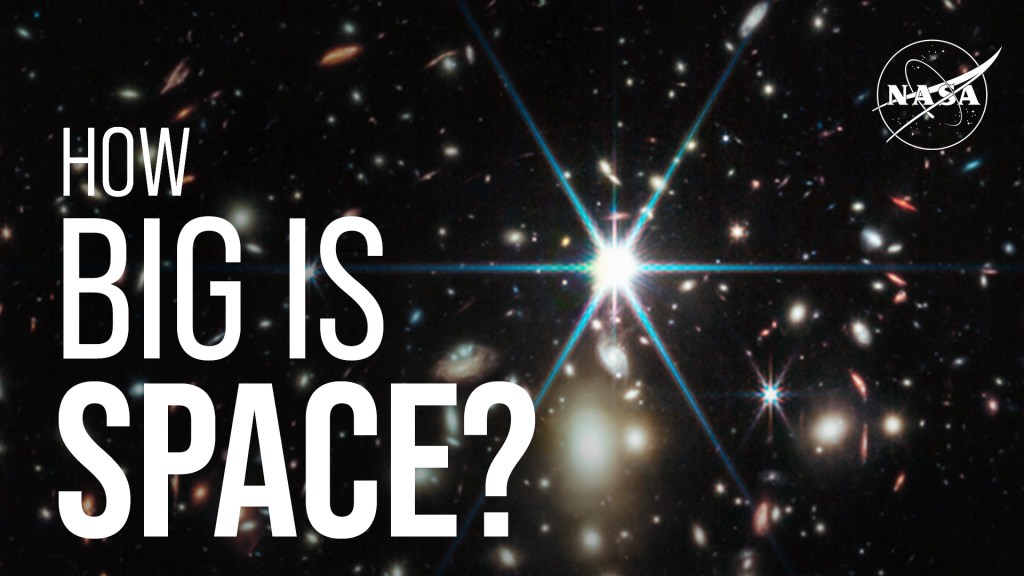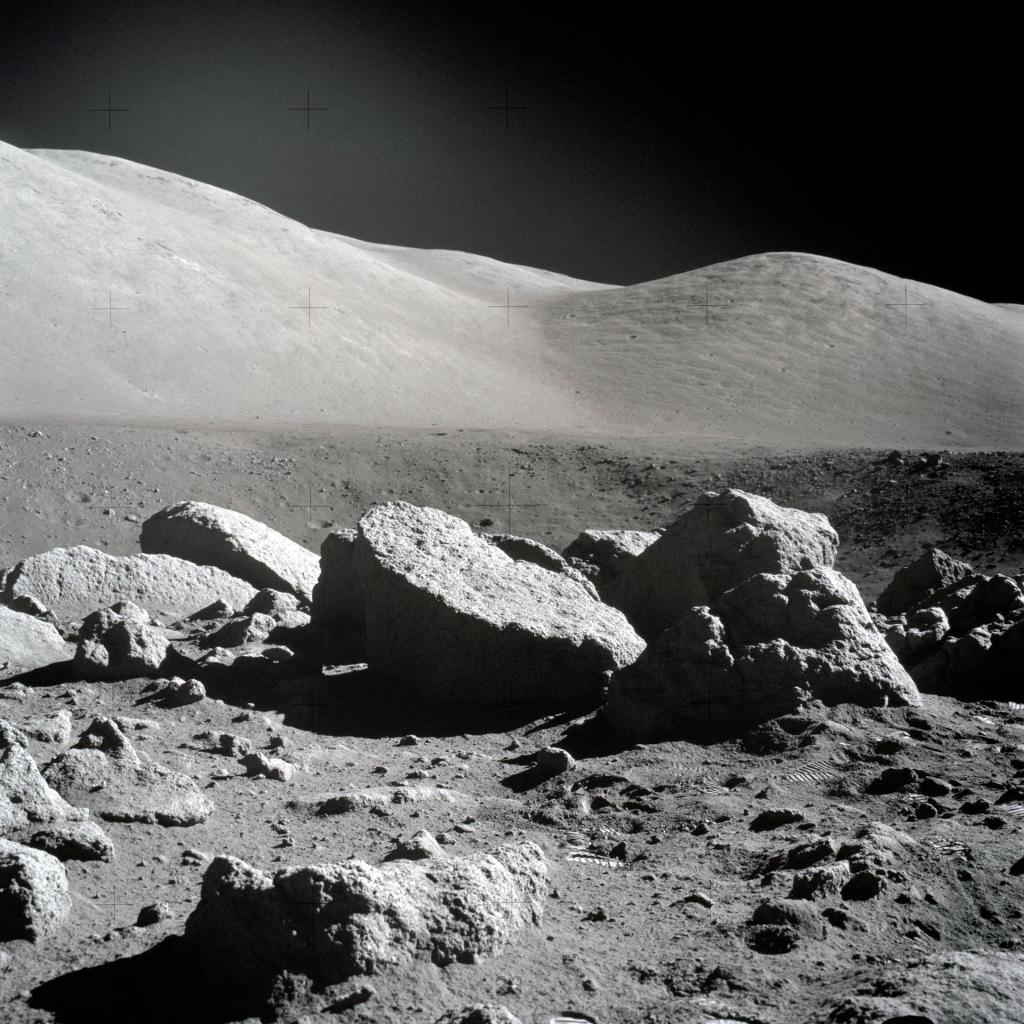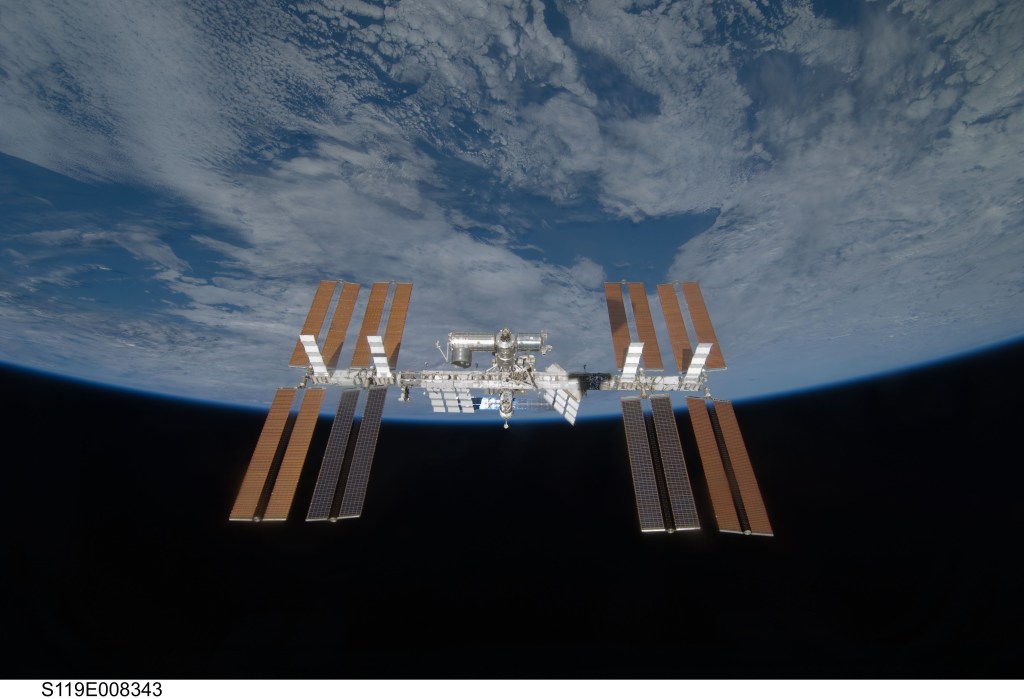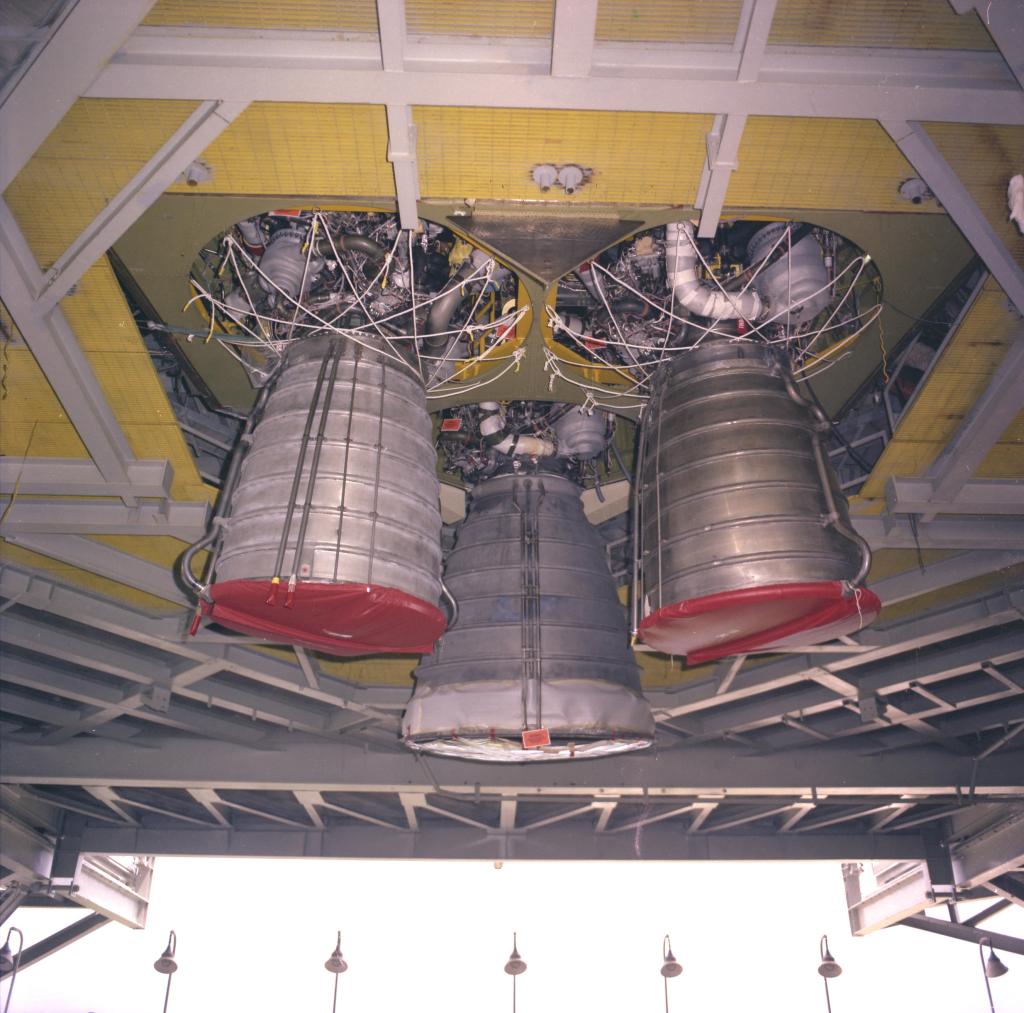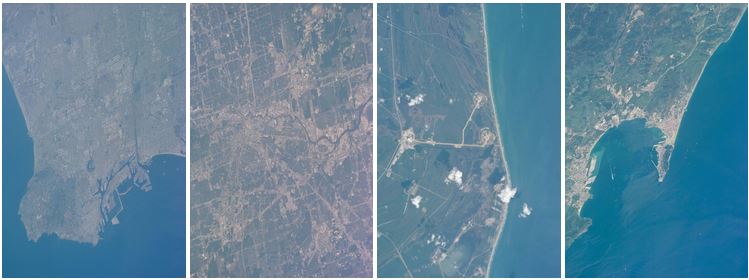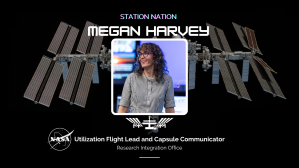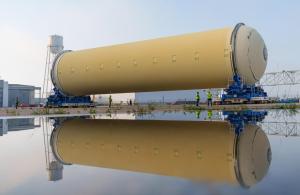On April 17, 1998, space shuttle Columbia lifted off on the STS-90 Neurolab mission to conduct cutting edge research on the responses of the brain and central nervous system to spaceflight.
On April 17, 1998, space shuttle Columbia lifted off on the STS-90 Neurolab mission to conduct cutting edge research on the responses of the brain and central nervous system to spaceflight. The seven-member crew of STS-90 consisted of Commander Richard A. Searfoss, Pilot Scott D. Altman, Mission Specialists Richard M. Linnehan, Kathryn “Kay” P. Hire, and Canadian Space Agency (CSA) astronaut Dafydd “Dave” R. Williams, and Payload Specialists Jay C. Buckey and James A. Pawelczyk. Alexander W. Dunlap of NASA and Chiaki Mukai of the National Space Development Agency (NASDA) of Japan, now the Japan Aerospace Exploration Agency, served as alternate payload specialists. During the 16-day mission, they completed the most complex life sciences research in orbit, consisting of 26 experiments to provide a better understanding of the brain and central nervous system’s response to microgravity.
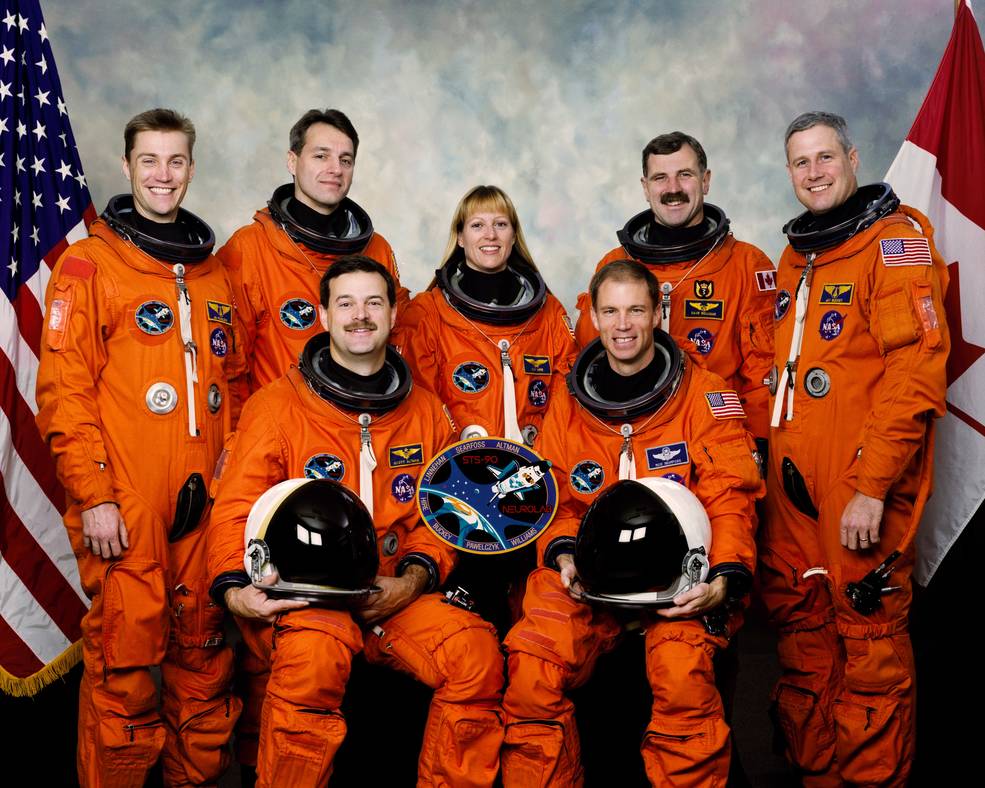
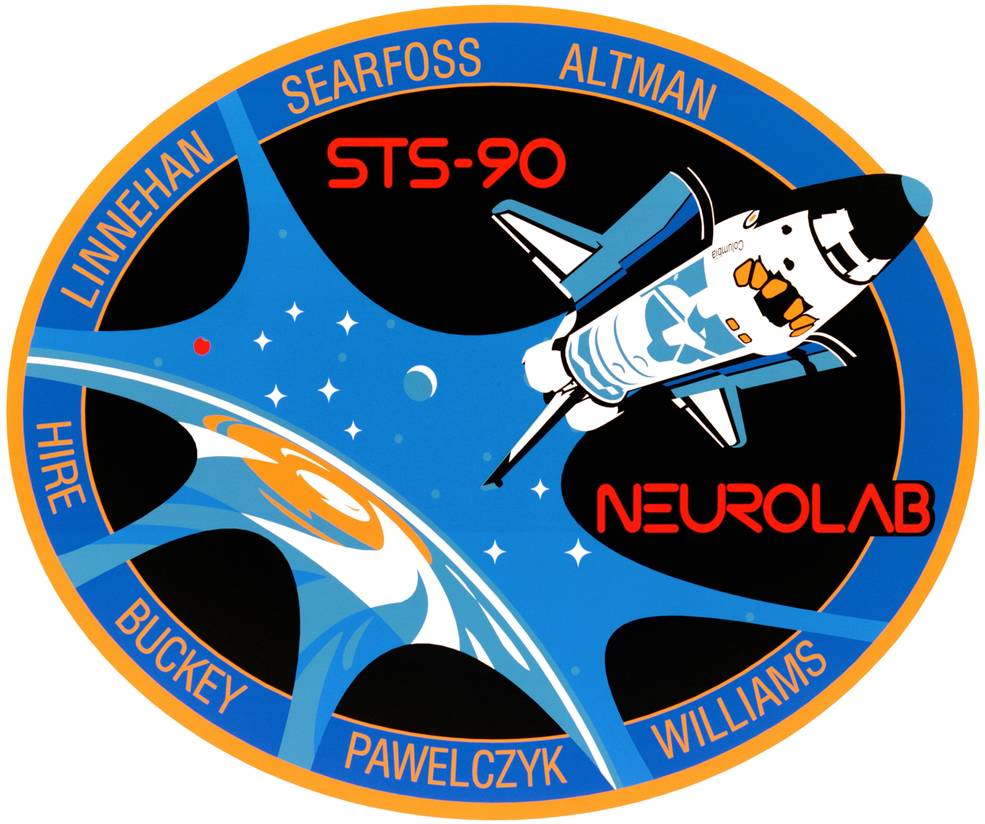
Left: STS-90 astronauts Scott D. Altman, seated left, and Richard A. Searfoss; James A. Pawelczyk, standing left, Richard M. Linnehan, Kathryn “Kay” P. Hire, Dafydd “Dave” R. Williams of the Canadian Space Agency, and Jay C. Buckey. Right: The STS-90 crew patch.
In 1990, the U.S. Congress and President George H.W. Bush designated the 1990’s as the “Decade of the Brain” to recognize advances in our understanding of the basic structure and function of the brain. As its contribution to advancing knowledge about the effects of spaceflight on the nervous system, NASA proposed a dedicated Spacelab science mission called Neurolab. The National Institute of Health (NIH) partnered with NASA in the early development of the concept and selection of the Neurolab investigations. The NIH Institute Partners, together with the National Science Foundation and the Office of Naval Research, supported the scientific experiments as having important implications for health and quality of life for people on Earth. International space agencies, including the CSA, the French Space Agency (CNES), the German Space Agency (DLR), the European Space Agency (ESA), and NASDA partnered with NASA to provide flight and ground hardware for Neurolab experiments and support investigations from their respective countries.

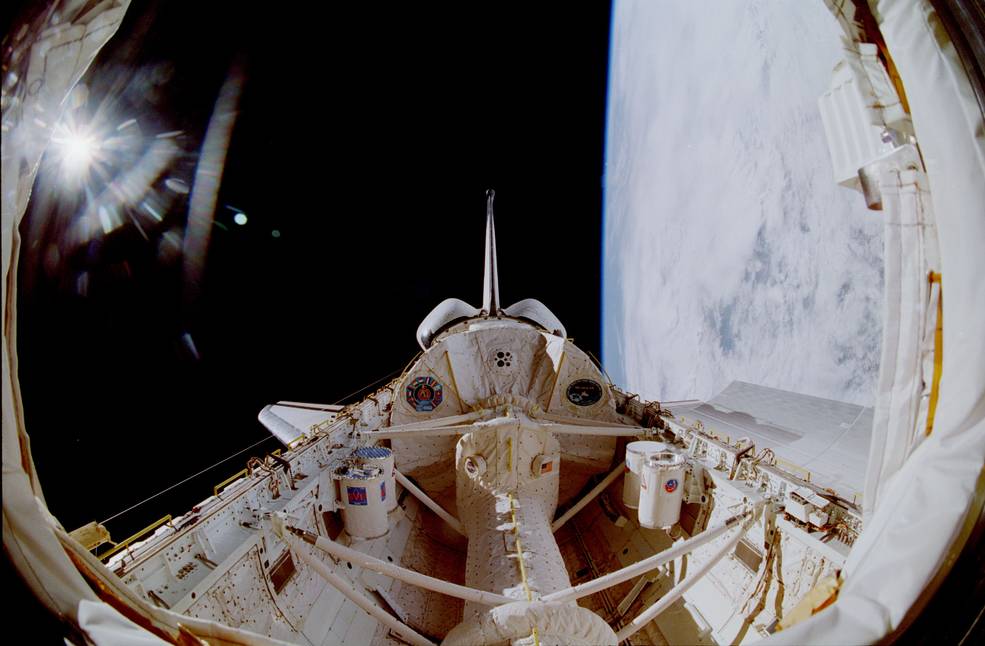
Left: Liftoff of space shuttle Columbia on the STS-90 Neurolab mission. Right: View of the Spacelab module in Columbia’s payload bay.
Space shuttle Columbia’s 25th liftoff took place at 2:19 p.m. EDT on April 17, 1998, from Launch Pad 39B at NASA’s Kennedy Space Center (KSC) in Florida, carrying the Neruolab mission into space. Searfoss, making his third trip into space and first as commander, and Pilot Altman on his first launch, monitored Columbia’s systems as they climbed into orbit, assisted by Mission Specialist Hire, also on her first flight, serving as the flight engineer. Mission Specialist and Payload Commander Linnehan, the only veterinarian in the astronaut corps and on his second space mission, accompanied them on the flight deck. Mission Specialist Williams, a physician, and Payload Specialists Buckey, also a physician, and Pawelczyk, a physiologist, and all making their first spaceflights, experienced launch in the shuttle’s middeck. Upon reaching orbit, the crew opened the payload bay doors, thus deploying the shuttle’s radiators. Shortly after, the crew opened the hatch from the shuttle’s middeck, translated down the transfer tunnel, and entered Spacelab for the first time, activating the module and turning on the first experiments.
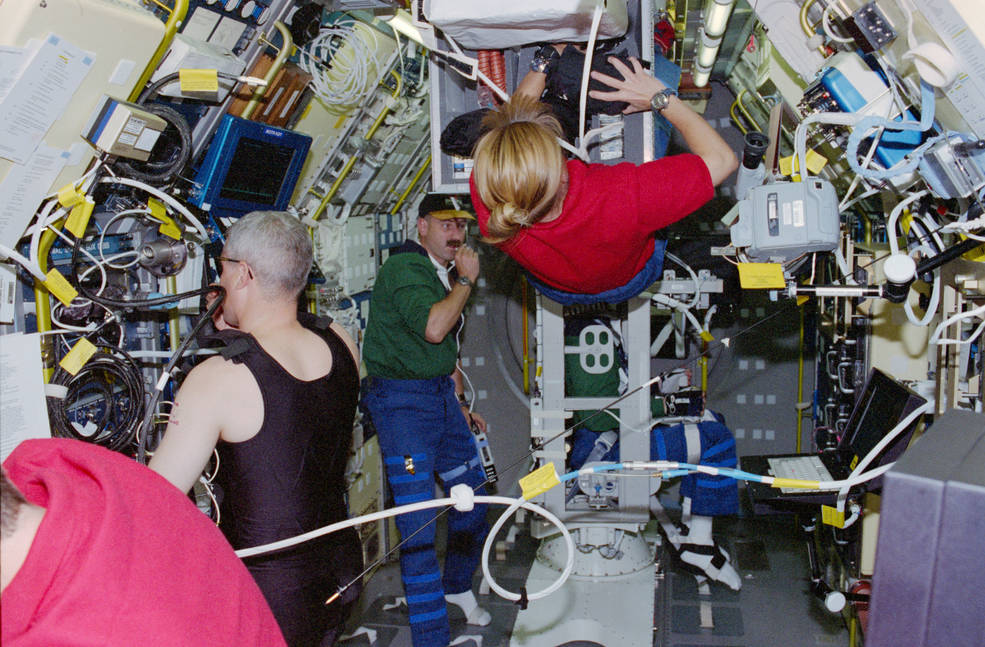
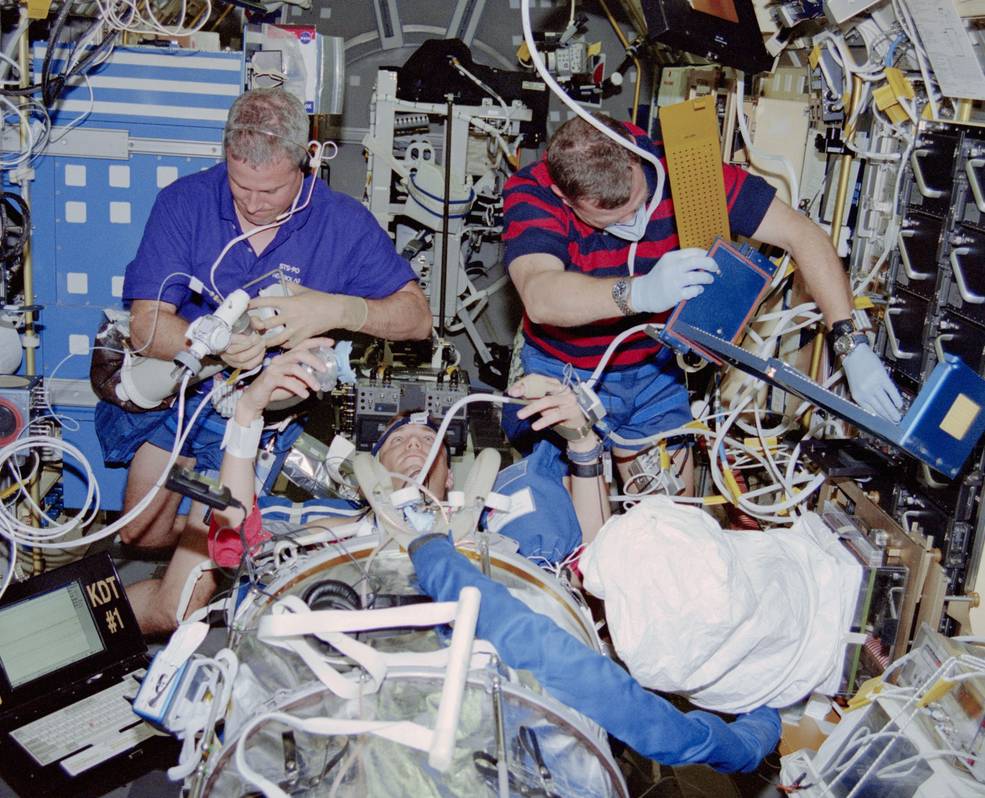
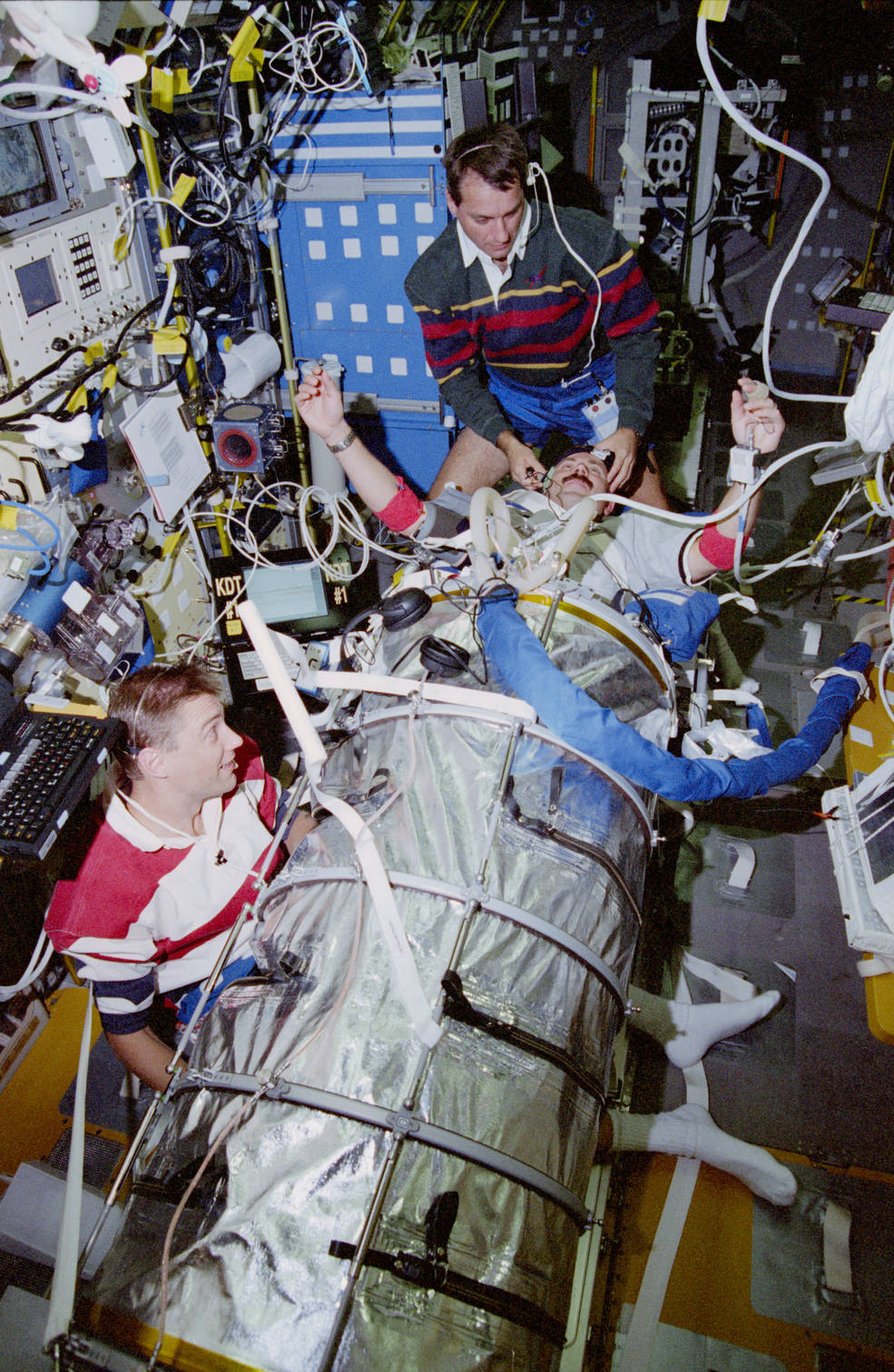
Left: Five of the seven STS-90 astronauts working on various Neurolab experiments inside the Spacelab module. Middle: Payload Specialist Jay C. Buckey, left, and Canadian Space Agency astronaut Dafydd “Dave” R. Williams assist experiment subject Payload Specialist James A. Pawelczyk in the Lower Body Negative Pressure (LBNP) device for a study on the autonomic nervous system. Right: Pawelczyk, left, performs a microneurography experiment on Williams in the LBNP device as Payload Commander Richard M. Linnehan observes.
During the 16-day mission, the seven-member Neurolab crew served as both experiment subjects and operators, working with a wide array of biomedical instrumentation, including some instruments and devices developed especially for the mission. The majority of the science activities took place in the Spacelab module mounted in the shuttle’s payload bay, with Neurolab marking the 16th and final flight of the ESA-built pressurized module since its first flight on the STS-9 mission in 1983. In addition to the astronauts, Neurolab included about 2,000 animal subjects, including rats, mice, snails, crickets, and two kinds of fish, the largest collection of living organisms ever sent into space. Scientists grouped the 26 Neurolab experiments into eight teams. Four teams (with a combined total of 11 experiments) used crewmembers as subjects, and 4 teams (with 15 experiments) studied research animals. The teams studying human subjects included the Autonomic Nervous System, Sensory Motor and Performance, Vestibular, and Sleep teams. The teams with animal subjects included the Neuronal Plasticity, Mammalian Development, Aquatic, and Neurobiology teams.
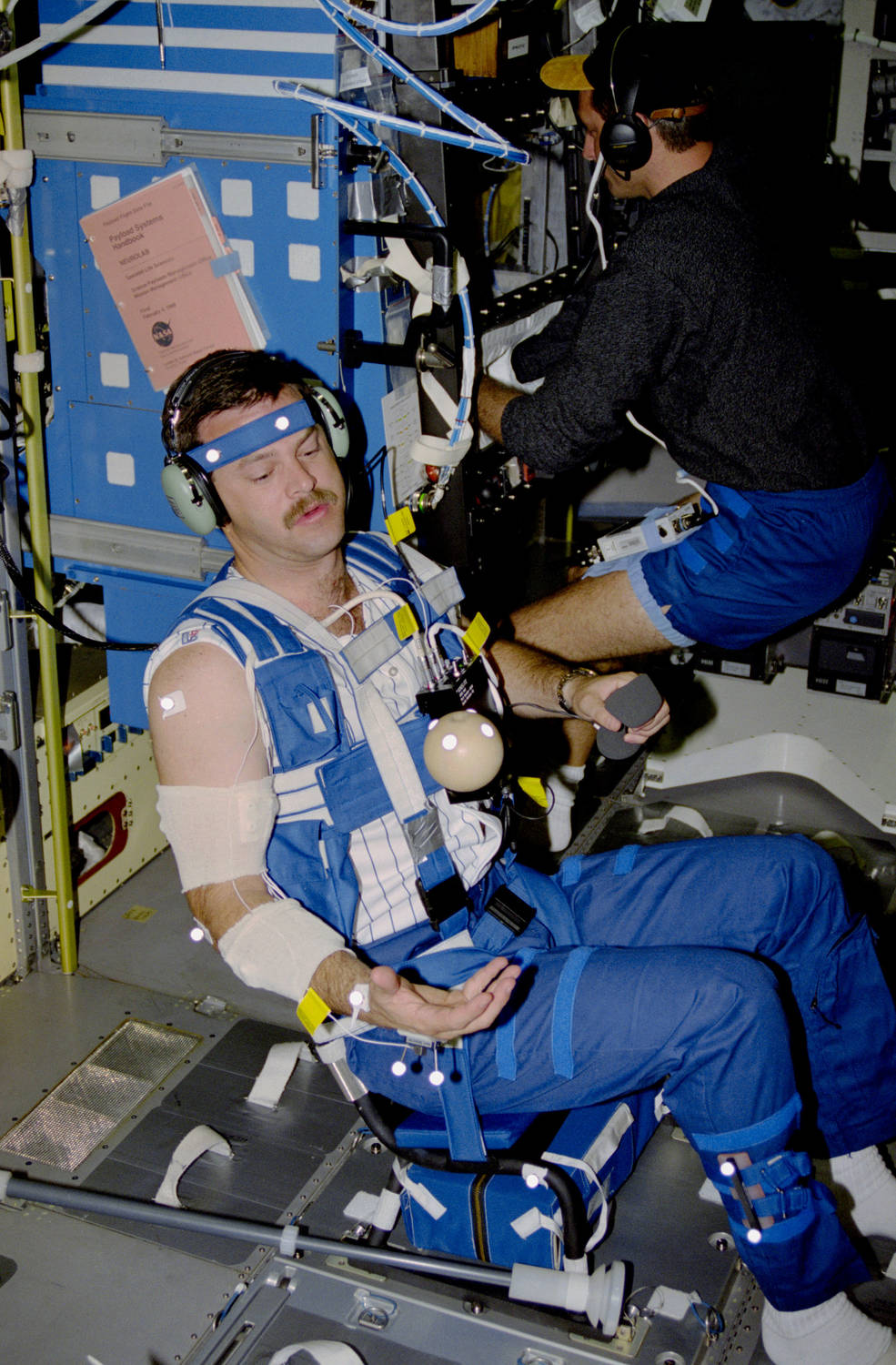
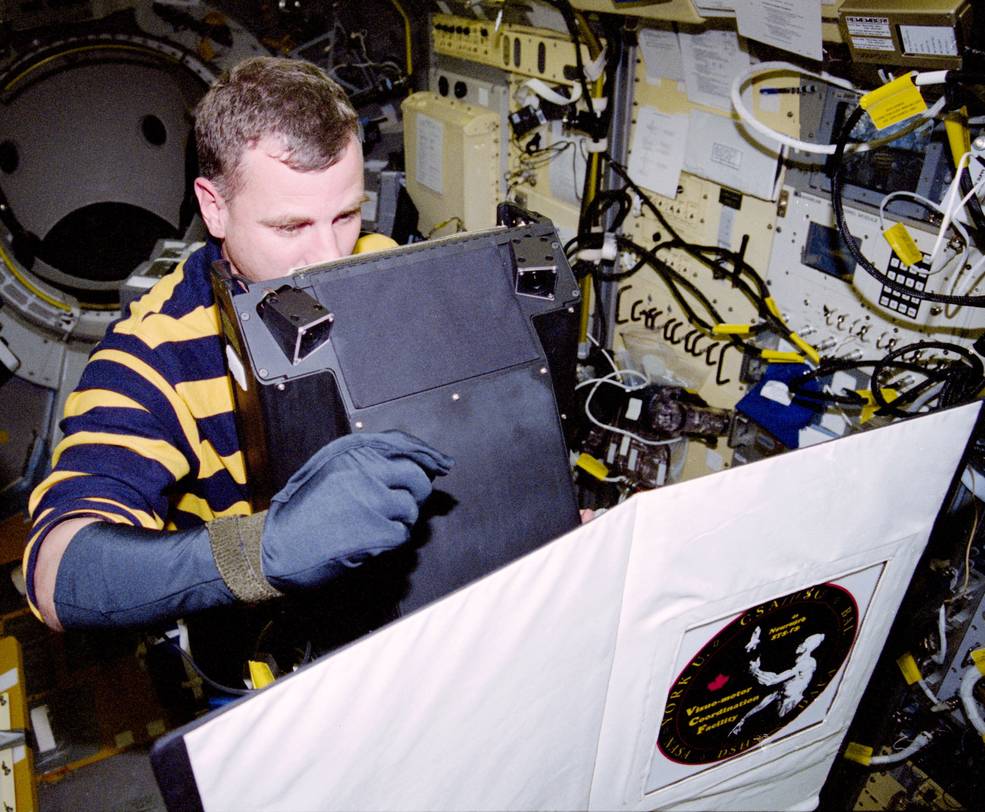
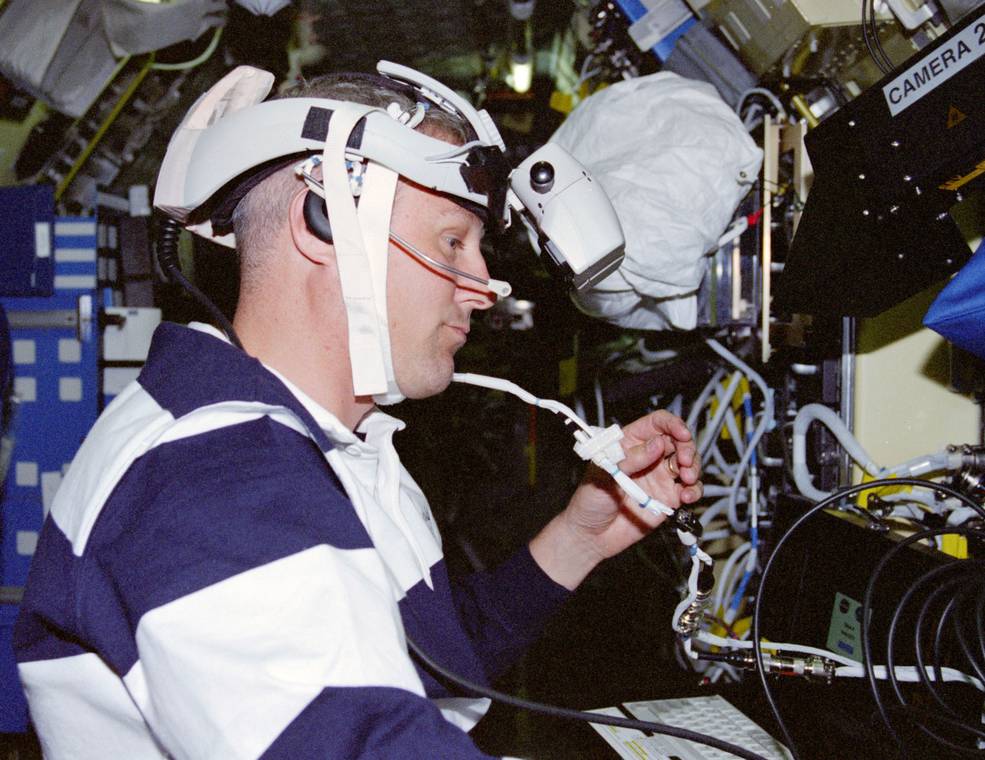
Three views of Sensorimotor experiments. Left: STS-90 Commander Scott D. Altman conducts a session with the Kinelite ball-catching experiment. Middle: Canadian Space Agency astronaut Dafydd “Dave” R. Williams performs an eye-hand coordination session with the Visuo-motor Coordination Facility. Right: Payload Specialist Jay C. Buckey conducts a spatial orientation study using the Virtual Environment Generator apparatus.
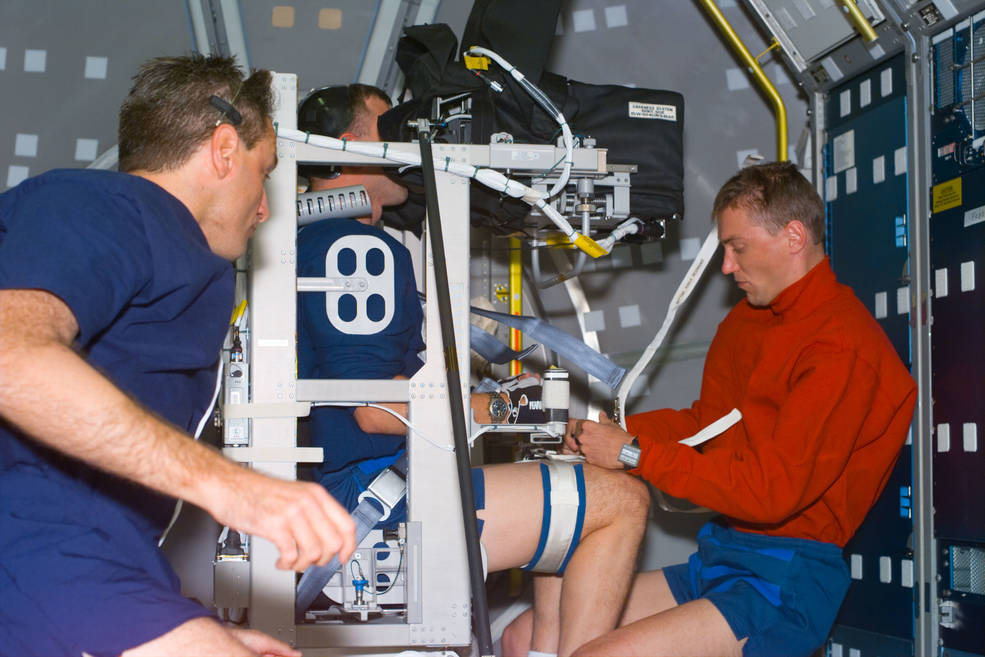
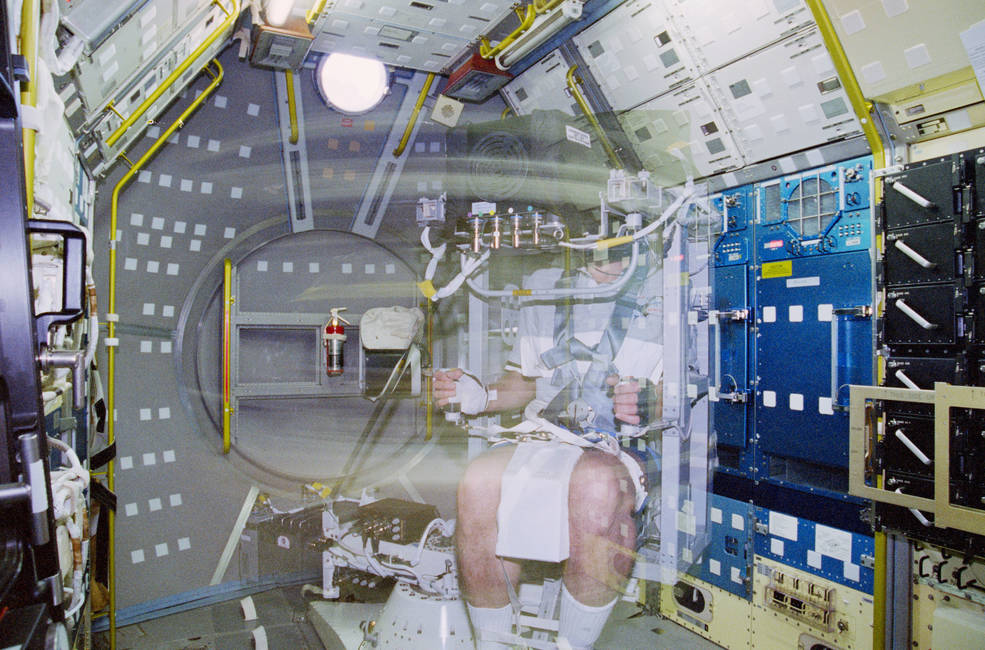
The Vestibular team experiments used the off-axis rotating chair. Left: Canadian Space Agency astronaut Dafydd “Dave” R. Williams serves as a subject for the vestibular stimulation experiment, with Payload Commander Richard M. Linnehan, left, and Payload Specialist James A. Pawelczyk as operators. Right: Long exposure shows the movement of the rotating chair.
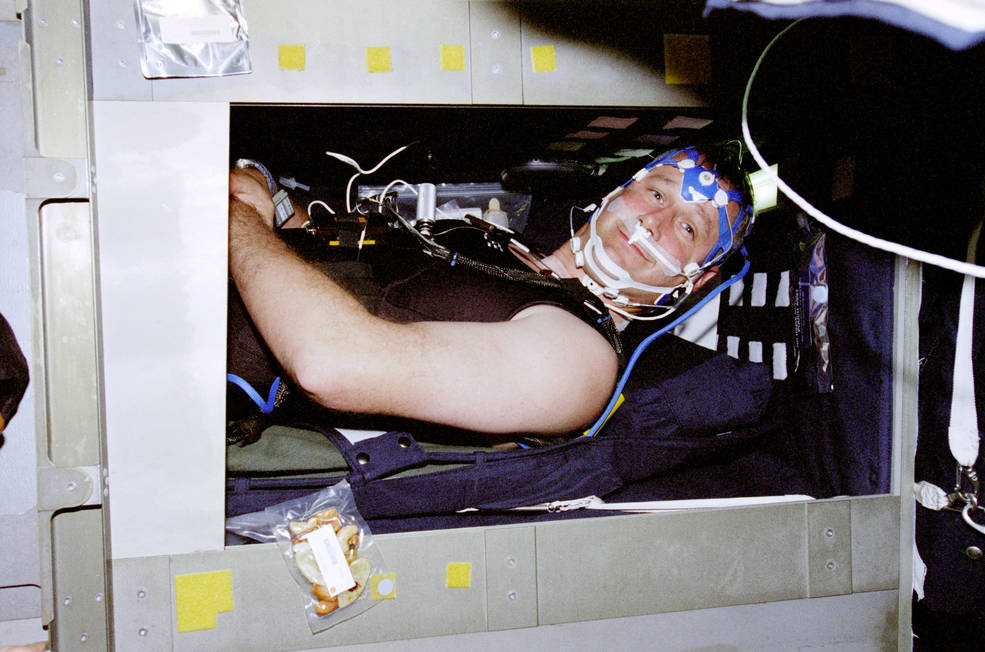
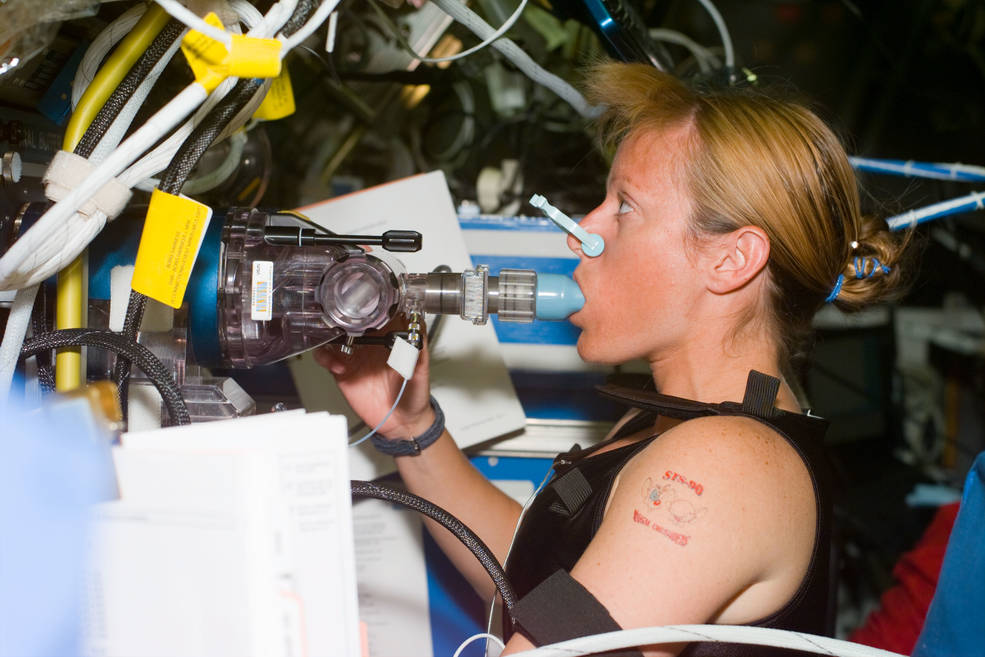
Left: Payload Specialist Jay C. Buckey begins a sleep study, with sensors to monitor brain activity and breathing. Right: Mission Specialist Kathryn “Kay” C. Hire performs a pulmonary function test.
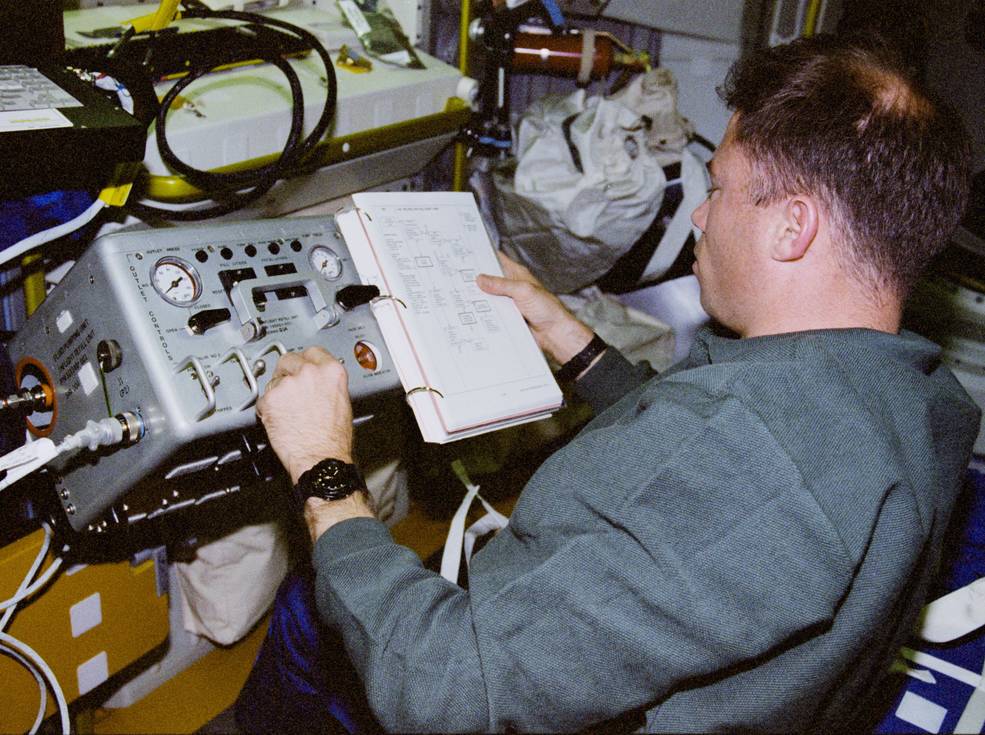
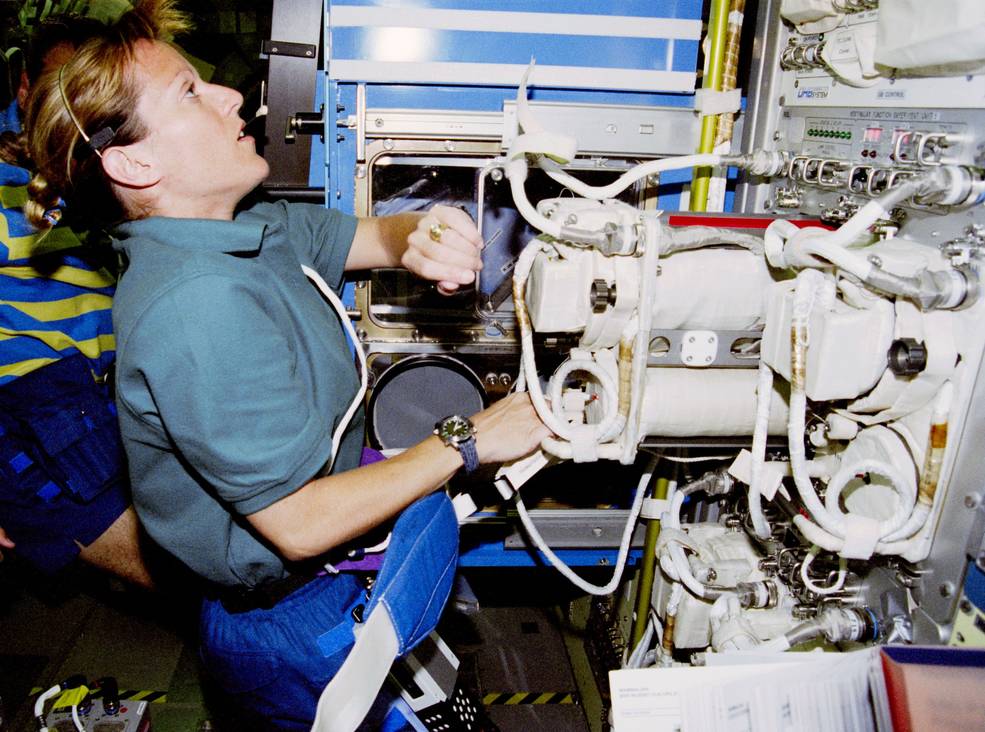
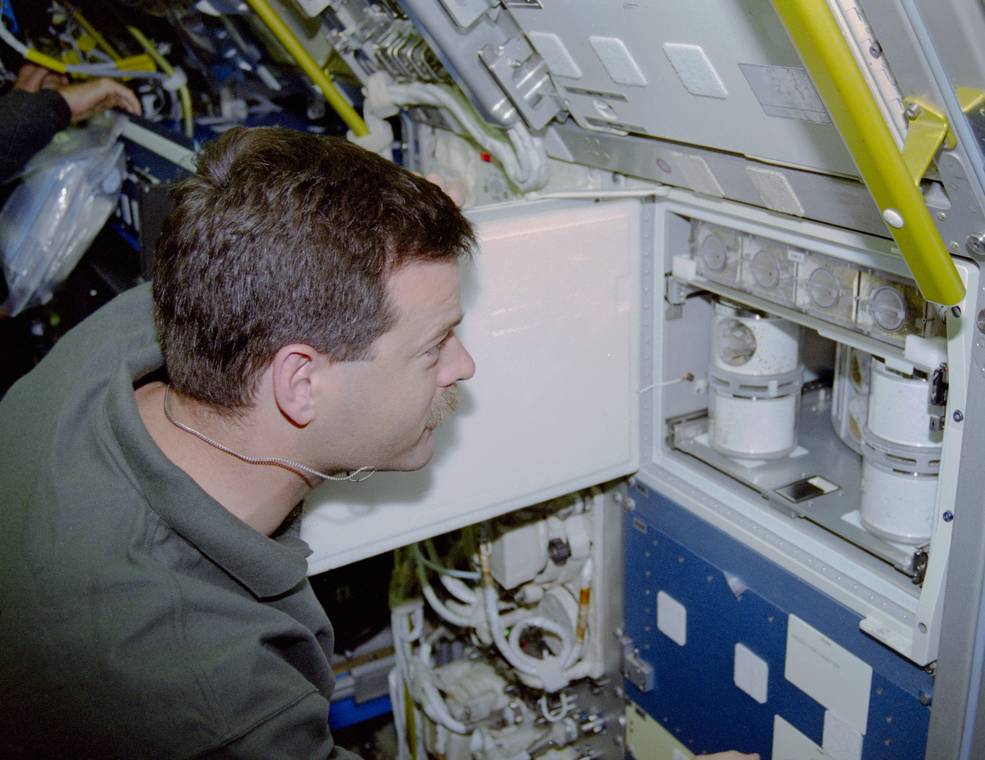
Left: STS-90 Pilot Richard A. Searfoss works with the Rodent Animal Holding Facility. Middle: Mission Specialist Kathryn “Kay” C. Hire works with the Vestibular Function Experiment Unit aquatic habitat. Right: Commander Scott D. Altman inspects the Botany Experiment Incubator housing the crickets.
In addition to the complex set of Neurolab experiments, the STS-90 astronauts’ activities also included other science and operational items. As on all missions, they enjoyed looking at the Earth as time allowed, and they photographed selected sites and targets of opportunity. A static bioreactor developed at NASA’s Johnson Space Center in Houston housed two experiments growing kidney and leukemia cells, precursors to experiments flown on the International Space Station. A unique opportunity arose for the STS-90 astronauts to hold a two-way video conference with NASA astronaut Andrew S.W. Thomas, in the fourth month of his long-duration stay aboard the Russian space station Mir.

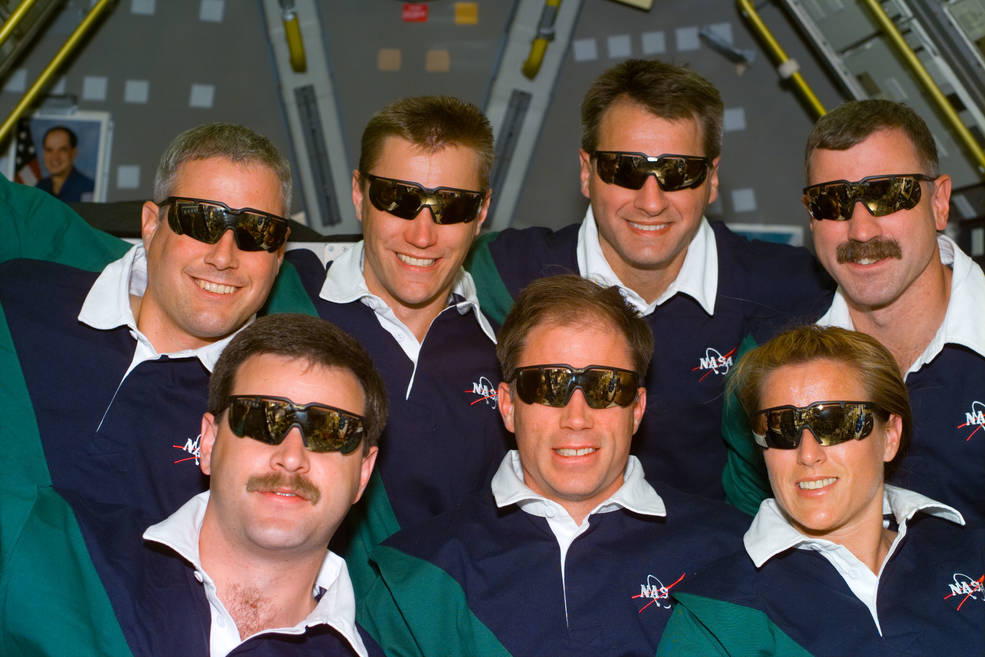
Left: STS-90 astronauts Scott D. Altman, front row left, Richard M. Searfoss, and Kathryn “Kay” C. Hire; and Jay C. Buckey, back row left, James A. Pawelczyk, Richard M. Linnehan, and Dafydd “Dave” R. Williams pose for the crew photo in the Spacelab module. Right: The STS-90 crew wearing dark glasses.
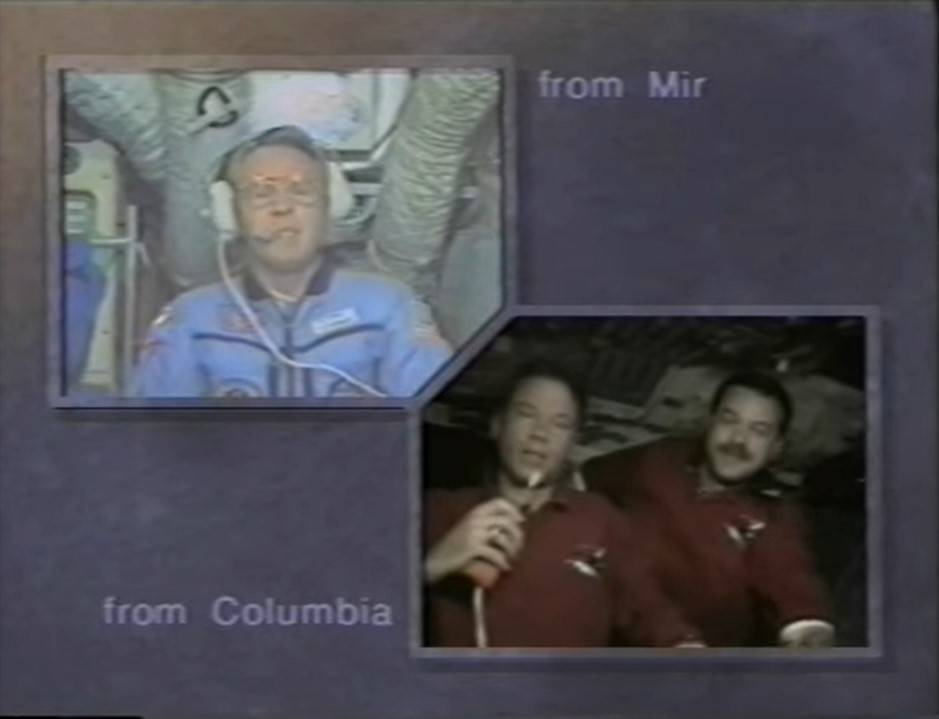
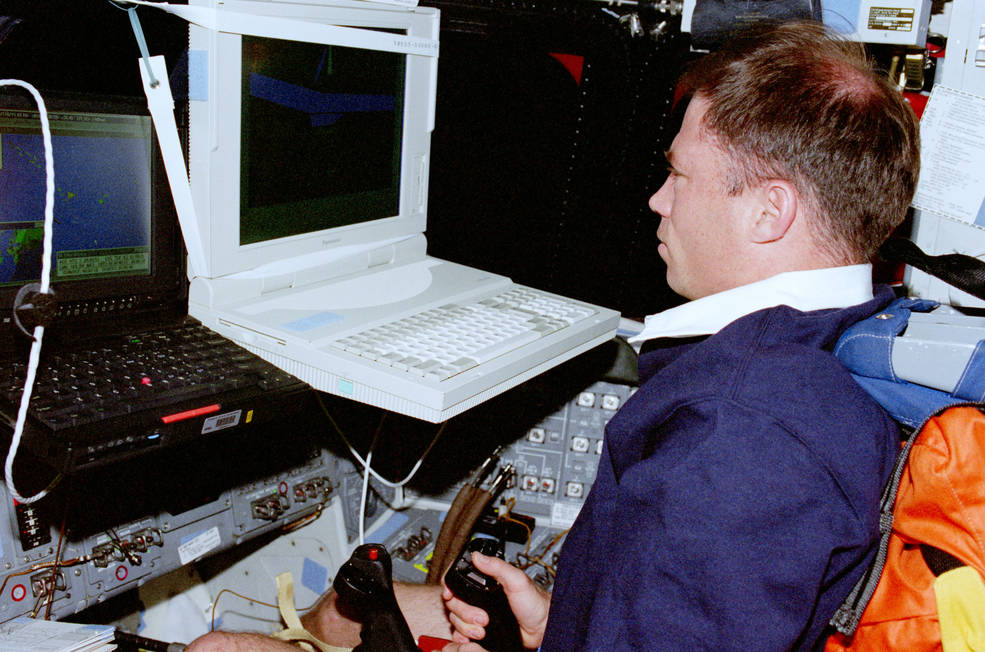
Left: Two-way video conference between NASA astronaut Andrew S.W. Thomas, top left, aboard the Russian space station Mir and STS-90 crew members Richard A. Searfoss and Scott D. Altman aboard Columbia. Right: STS-90 commander Searfoss uses a simulator to practice landing the space shuttle.
On their last day in space, the crew finished the experiments, closed up the Spacelab module and strapped themselves into their seats to prepare for their return to Earth. They fired the Shuttle’s Orbital Maneuvering System engines to begin the descent from orbit. Searfoss piloted Columbia to a smooth landing at KSC on May 3, after completing 256 orbits around the Earth in 15 days, 21 hours, and 50 minutes. The astronauts exited Columbia about one hour after landing and immediately began their postflight data collection to measure their immediate response after returning to a 1 g environment. Ground crews towed Columbia to the Orbiter Processing Facility to begin preparing it for its next mission, STS-93 to deploy the Chandra X-ray observatory.
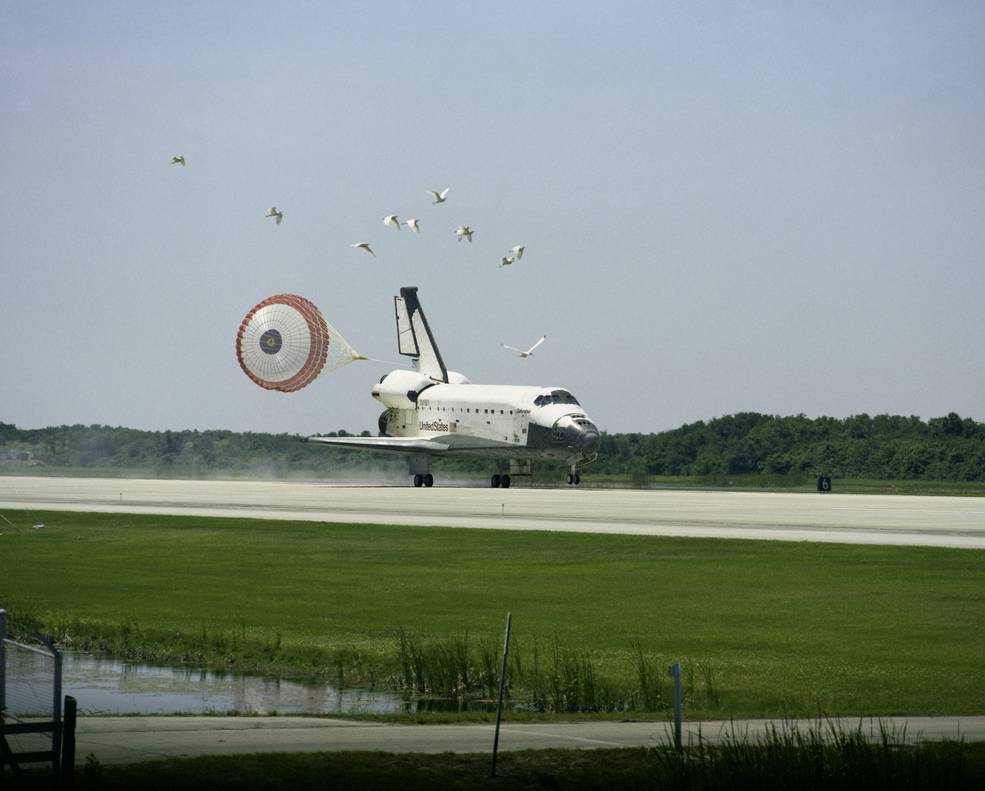
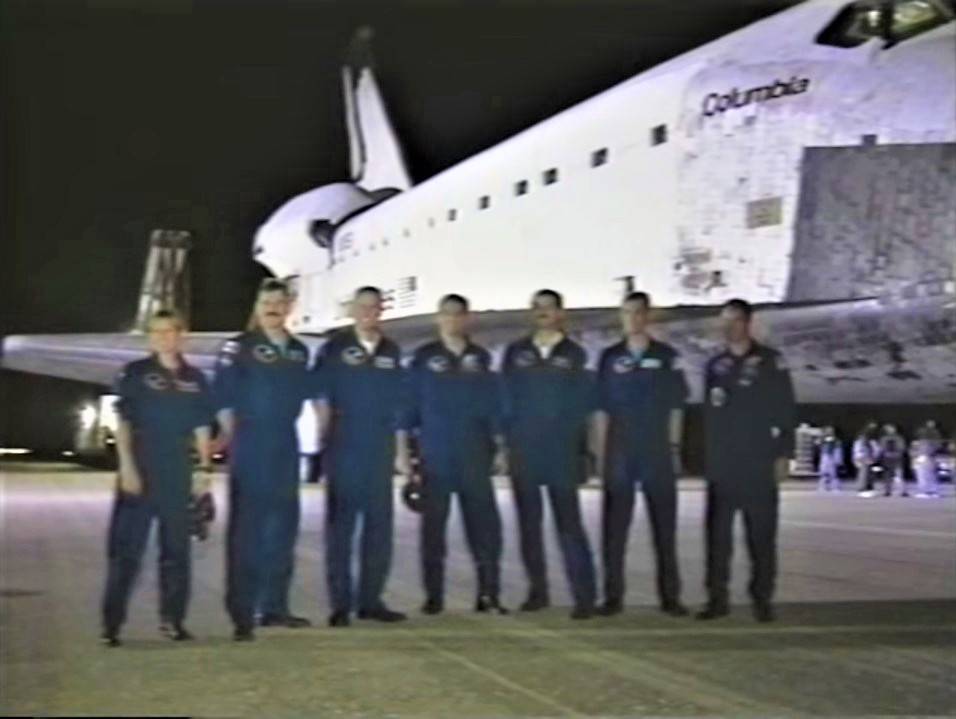
Left: Space Shuttle Columbia lands at NASA’s Kennedy Space Center in Florida to end the 16-day STS-90 Neurolab mission. Right: The seven STS-90 Neurolab crew members pose in front of Columbia shortly after the landing.
Enjoy the crew-narrated video about the STS-90 Neurolab mission. NASA published the results of the Neurolab mission in NASA SP 2003-535.


